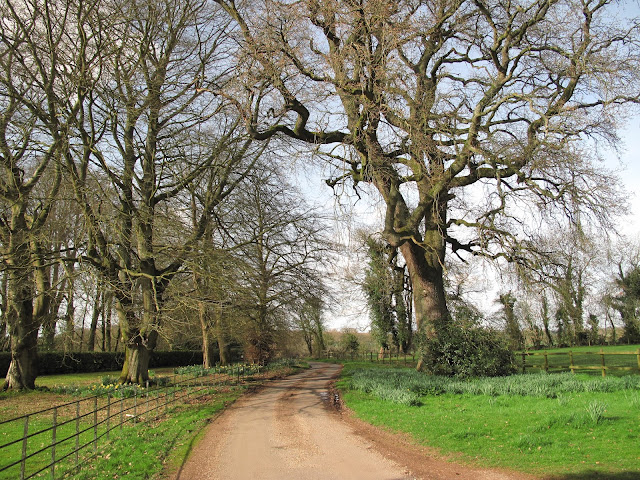 |
| | The bright and beautiful place where Jane Austen grew up: Steventon | |
 England 2015 Trip Journal
England 2015 Trip JournalSaturday, April 11
Going from Winchester to Steventon feels like seeing Jane Austen's entire life in a single day. I've always had what amounted to almost a fear of going to Winchester, where Jane died. In my mind it only has sad associations with her life, so I never thought I could really face seeing her grave or the place where she spent the last moments of this life. But, although it was sad, it was a reminder that the real Jane, her spirit, is not buried under Winchester Cathedral – so seeing her grave actually became a comfort. The elegant gold plaque on the wall was added in 1870 by her nephew and biographer James Edward Austen-Leigh, and the stained glass window in 1900 by public subscription. But the actual marker given to her at her death in 1817 is much simpler, and lies in the floor below the other two. It was composed by her brother Henry, and reads:
In memory of
JANE AUSTEN,
youngest daughter of the late
Revd GEORGE AUSTEN
formerly Rector of Steventon in this County.
She departed from this Life on the 18th of July, 1817,
aged 41, after a long illness supported with
the patience and the hope of a Christian.
The benevolence of her heart,
the sweetness of her temper, and
the extraordinary endowments of her mind
obtained the regard of all who knew her, and
the warmest love of her intimate connections.
Their grief is in proportion to their affection
they know their loss to be irreparable
but in their deepest affliction they are consoled
by a firm though humble hope that her charity,
devotion, faith and purity have rendered
her soul acceptable in the sight of her
REDEEMER


 |
| The window and plaque to mark where Jane was buried. |
 |
| Remembering our Jane. |
 |
| Approaching Winchester Cathedral on the sunniest of spring days! (From the Colebrook Street car park.) |

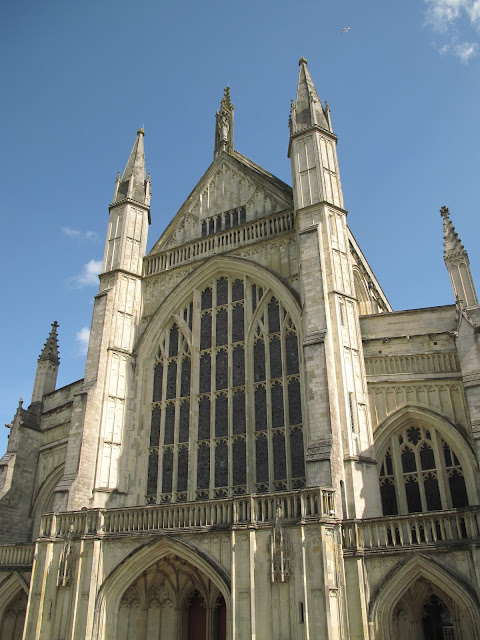
 |
| A chorus of Handel's Messiah wouldn't go amiss right now... |
(Alas, I somehow managed to take zero pictures of this exciting sight.)
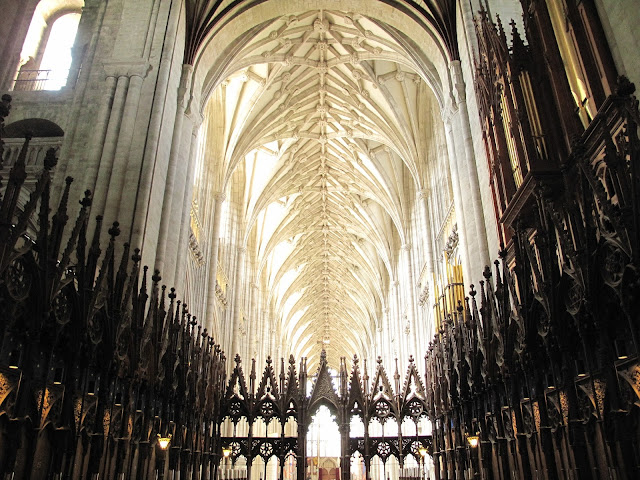 |
| Just standing in some 14th century choir stalls. No big deal... |
 |
| More of those head-tilting fan vaults. |
 |
| It's a sunny day in England, therefore I must eat ice cream. |
We then made our way around to the other side of the Cathedral, past some Tudor houses and a medieval looking wall, took a left on Dome Alley, another left onto Kingsgate, and one more left onto College Street. Seeing #8 College Street, where Jane was staying during her illness, was also surprisingly calming rather than depressing. It is neither a deserted nor a busy place, just a quiet street with a steady stream of pedestrians walking past the blossoming trees and the pale yellow house. I still could not help tearing up for a moment thinking of how much Cassandra must have felt she had lost – "...the gilder of every pleasure" is how she described Jane. But it is comforting to actually see the place and to know that it is a pleasant one.
 |
| Jane's last home. |
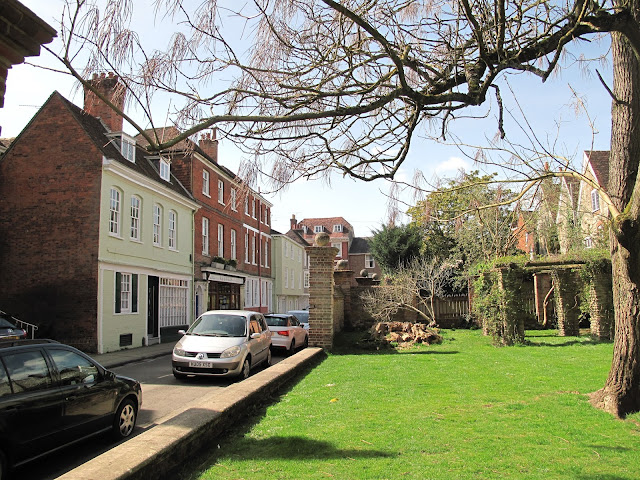 |
| The peaceful park that Jane could have seen out of her windows. |
 |
| Looking the other way down College Street. |
 |
| Crepes! |
Steventon is just under half an hour north of Winchester, and, using our satnav (a.k.a. GPS), we found it easily. We have now walked and have now driven to get to Steventon from the main road, and I definitely prefer driving. The only place to park is at the church, so we started there.
As during our first visit, the entire area was deserted, making it perfectly peaceful. Everything was the brightest, freshest green! The grass was practically glowing in the Spring sunshine, and the air was crisp and clear from the chilly wind, making every view brilliantly clear.
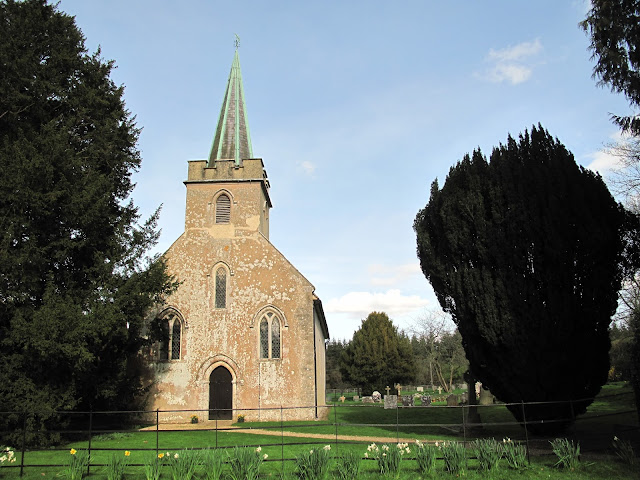 |
| St. Nicholas Church in Steventon – a place Jane knew and loved. |
 |
| The 1,000 year-old yew tree outside of St. Nicholas. |
 |
| Where the Austen family gathered every Sunday for the first 25 years of Jane Austen's life. |
 |
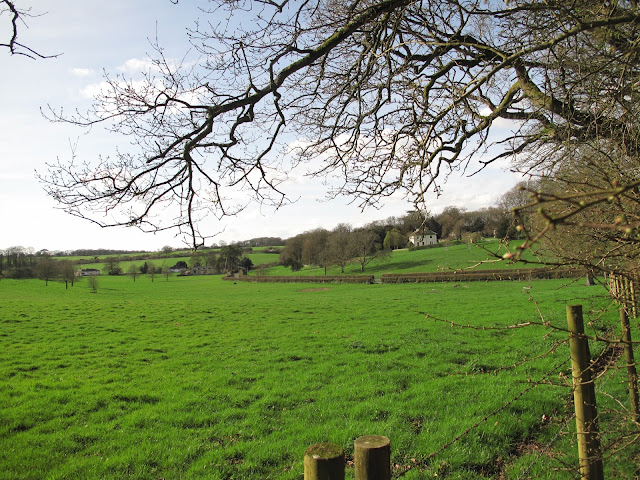 |
| Where the rectory, the home of the Austen family, once stood. |
 |
| This is a more precise look at where the house would have stood. The lime tree was planted by Jane's brother James before the Rectory was demolished. |
 |
| The happiest of times! |
Instead of touring The Vyne, we came home to our little cottage in the little English village to eat our delicious dinner of curried chicken and veg. Alresford is such an English village: tidy, old, picturesque, and a community. It's lovely. Even our cottage couldn't be more English! Situated just off of the high street with it's perfectly quaint brick exterior, it comprises the middle and upper floors, and is a beautiful, creaky, timbered place filled with charming touches like old rugs and landscape paintings. And a tea kettle (which is perhaps the most important and English touch of all).

No comments:
Post a Comment